Binoculars at the ready
Quickly, before it moves - over there, under that parasol....
The lesser spotted beach lizard? No! Tourists are not the only strange creatures in Spain! What sort of wildlife can you expect to see on your Andalucian holiday? From creepy crawlies to larger mammals - let's take a look through the binoculars! You're guaranteed to see at least one of these guys, maybe all. Let's look closer at a list of 10 common species of Andalucian wildlife.
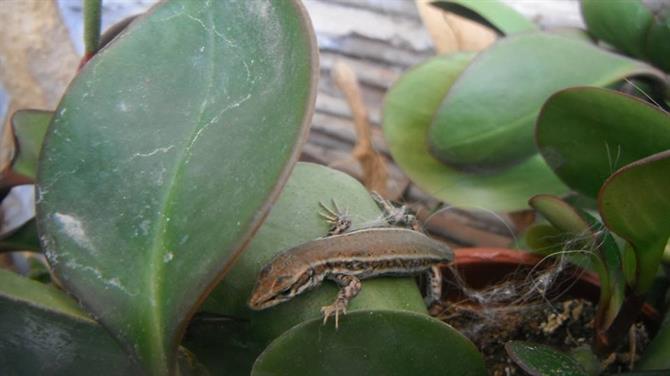
1. Gecko
I love these guys! Unfortunately, so does our cat. Not a day goes by without a rescue of one minus his tail, or worse, a flattened gecko brought to me by proud Puss as a gift. As the weather warms up, these timid little fellows hang around to snap up the flies.
Tarentola mauritanica is the species commonly found here in Andalucia, with their arrow shaped heads and crocodile tails. If there's one in your house, leave him there, the only harm he'll do is to the annoying fly or mosquito.
In Spanish: El Geco.
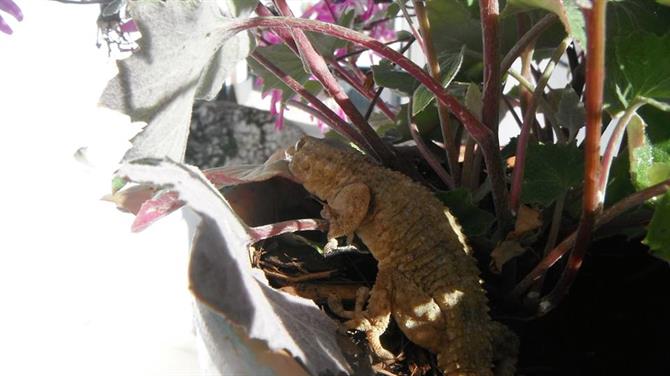
2. Spider
These I do not like! Funnily enough, they tend to stay outside here in Spain, we rarely have a house spider, unlike in the UK. Like the majority of us, I really jump if I see a large eight legged spider, but they're mostly in the garden or out in the 'campo'. There are actually more than 1700 spider species in Spain, but only a few of them are actually venomous. The local doctor's surgery will have a poster showing you the dangerous ones, and pharmacies in Spain carry antidotes.
If you go down to the woods in Andalucia, you might meet the funnel web spider. A thick silken web with a hole is the creepy clue, with their legs at full stretch they can reach 8cm. But don't kill it! They're actually protected, by the European Union Habitats Directive. There are Black Widow spiders here too, mostly found around the plastic greenhouses of Almería, but although venomous, they're not fatal. Having said that, I would probably die of shock if one did bite me!
In Spanish: Araña
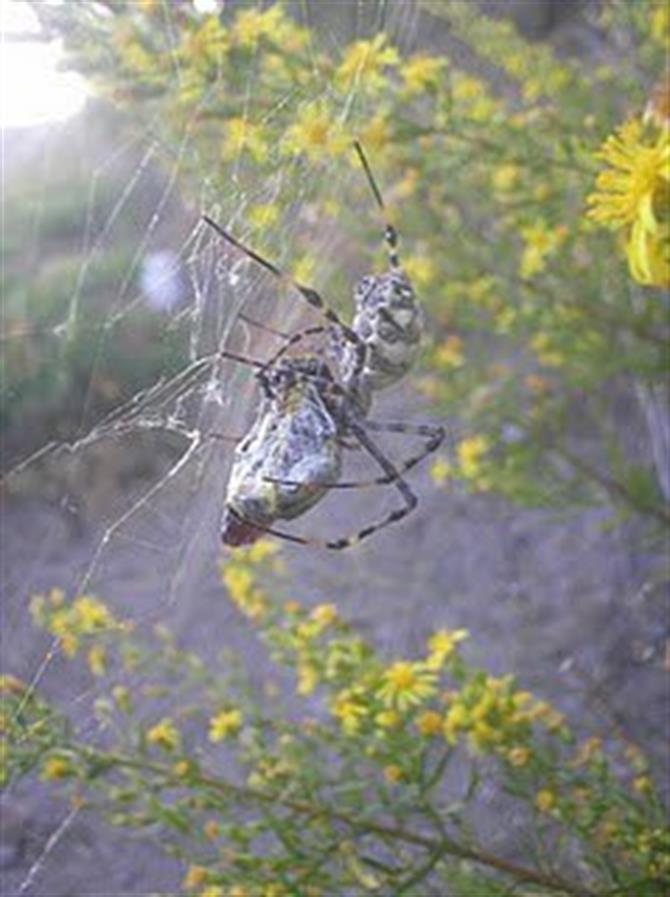
3. Butterfly
Yes, let's move on to something prettier. As soon as spring reaches up and turns the heating up, butterflies start to appear in Andalucia, fluttering and dancing around you as you walk the picturesque countryside. Lepidoptera is the collective name for a variety of butterflies and moths, and you'll see plenty on your Spanish holiday.
Cornflower blue, impossibly bright yellow, orange, red and dainty whites will accompany your walk or hike in the countryside.
In Spanish: Mariposa
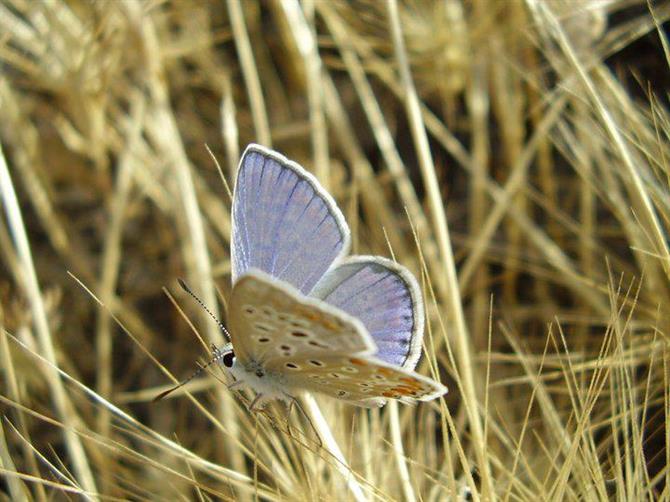
4. Cicada
You'll be more likely to hear than see the Cicada. For me it's the sound of a hot summer evening. The thrum, sometimes extremely loud, is the background music for a night on the terrace with tapas and a cold beer.The male is the one that makes all the noise - no surprises there - by contracting and relaxing a muscle, against a hollow abdomen. A sort of personal vuvuzela!
In Spanish: Cigarra.
5. Caterpillar
As every Spanish child is taught, caterpillars can be dangerous and must not be touched. The processionary caterpillar nests in Pine trees, like funnels of cotton wool, and should not be approached. When they hatch, they travel in long lines, and throw their poisonous spines at anything that makes them feel threatened. These little on-board harpoons will penetrate skin, and irritate. Dogs are susceptible, because they'll lick the offending area, transferring the spines to their tongues, often leading to death.
In Spanish: Oruga.
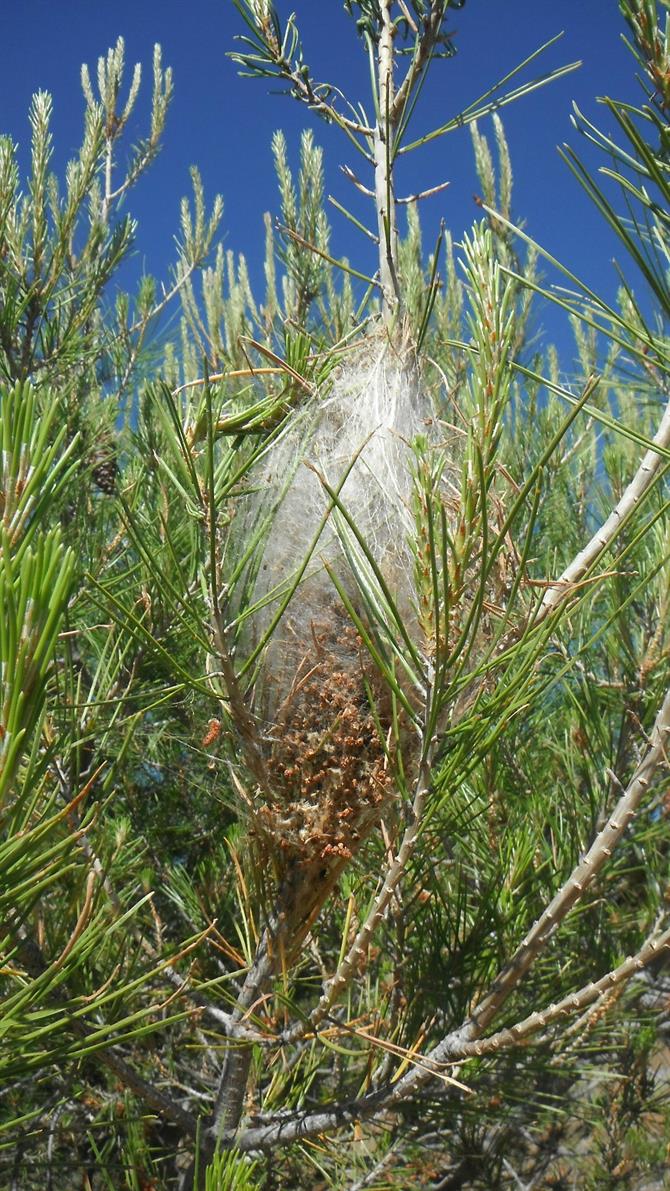
6. Praying Mantis
Or Praying Mantid. Light green, or brown, these are reminiscent of little alien figures with their triangular heads and bulbous eyes. All the better to see you with, in fact they have a vision range of up to 20 metres. You'll find the Praying Mantis on plant pots and grapevines, and they're much prettier than their closest relative, the Cockroach.
In Spanish: Mantis Religiosa.
7. Beetle
The sight of a large and ungainly beetle on its back always makes me stop in my own tracks and gently roll him upright, as he ambles off without even a thank you. Dung beetles are the busiest, rolling their smelly treasure around, always fun to watch. Today, researching photos for this post, I found a Royal Oil Beetle, a first for me, tricky though it was to get him to stay still long enough to snap him. Here he is...a little blurred as he was extremely fast on his feet!
In Spanish: Escarabajo - or Face Down :)
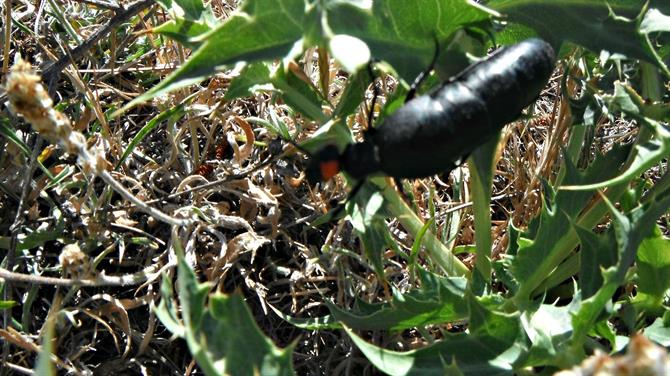
8. Snake
Slithering Sids. Yes, you're quite likely to see a few snakes in Spain, especially as the weather gets warmer and warmer. A mountain roadside on an early morning will yield at least one, warming his body up on the tarmac in the sunshine. The Lataste Viper is the only one that will give you a venomous nip - and they're pretty elusive. In Andalucia, you will be more likely to encounter the harmless trio of Horse-shoe Snake, the Ladder Snake or the Montpellier Snake. Locals don't like them, and will more than likely run them over, but they're delicate creatures that will do you no harm and make excellent pest control officers in the garden.
In Spanish: Serpiente
9. Ibex
Wild mountain goats, that can scramble up a sheer rock faster than Usain Bolt. You won't have to go wild to see one either, the Autovía A-7 (also called Autovia del Mediterráneo) is a perfect place for spotting Ibex, often just at the side of the road waiting to cross.
In Spanish: Ibice (M) Cabra (F).
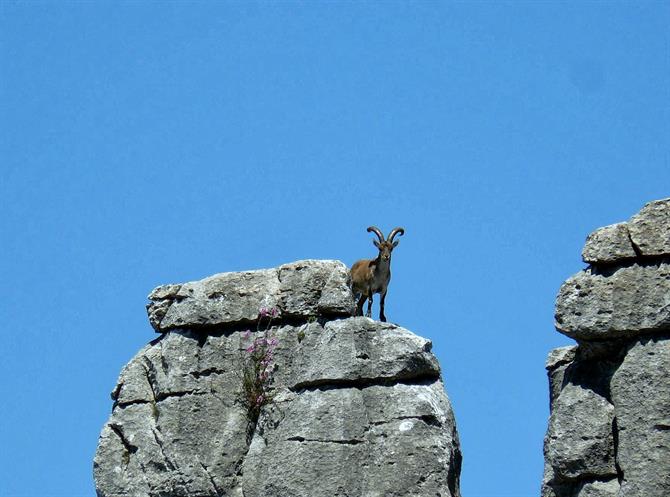
10. Boar
The majority of wild boar in Spain can be found wandering around my vegetable patch, with bottles of salad cream tucked under their arms. Seriously, they do love a bit of lettuce, and there's nothing nicer than a well tilled bit of earth to roll around on and ruin.
Up here on the high hills of the Alpujarras, we regularly see whole families of Jabali, from the fiercely tusked parents to the rather cute (for a short time anyway) babies of the tribe. They have no natural predators, at least not down here in Andalucia, except man, but can be dangerous if provoked, especially if it's a sow with her young. In the north of Spain, their predator is the Wolf.
In Spanish: Jabalí.
There are of course more than 10 members of the Spanish wildlife family to see in Andalucia, who will you encounter?
